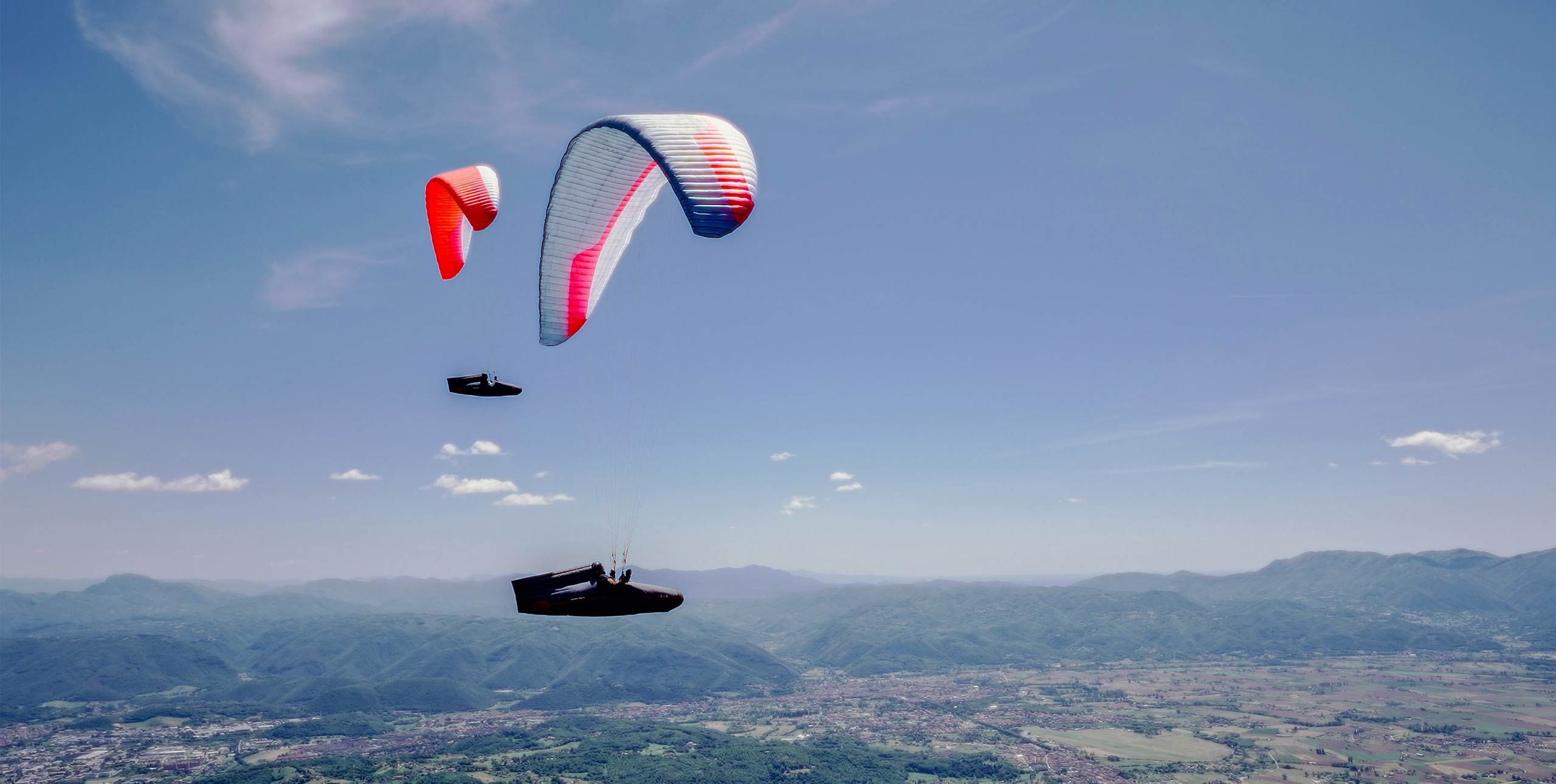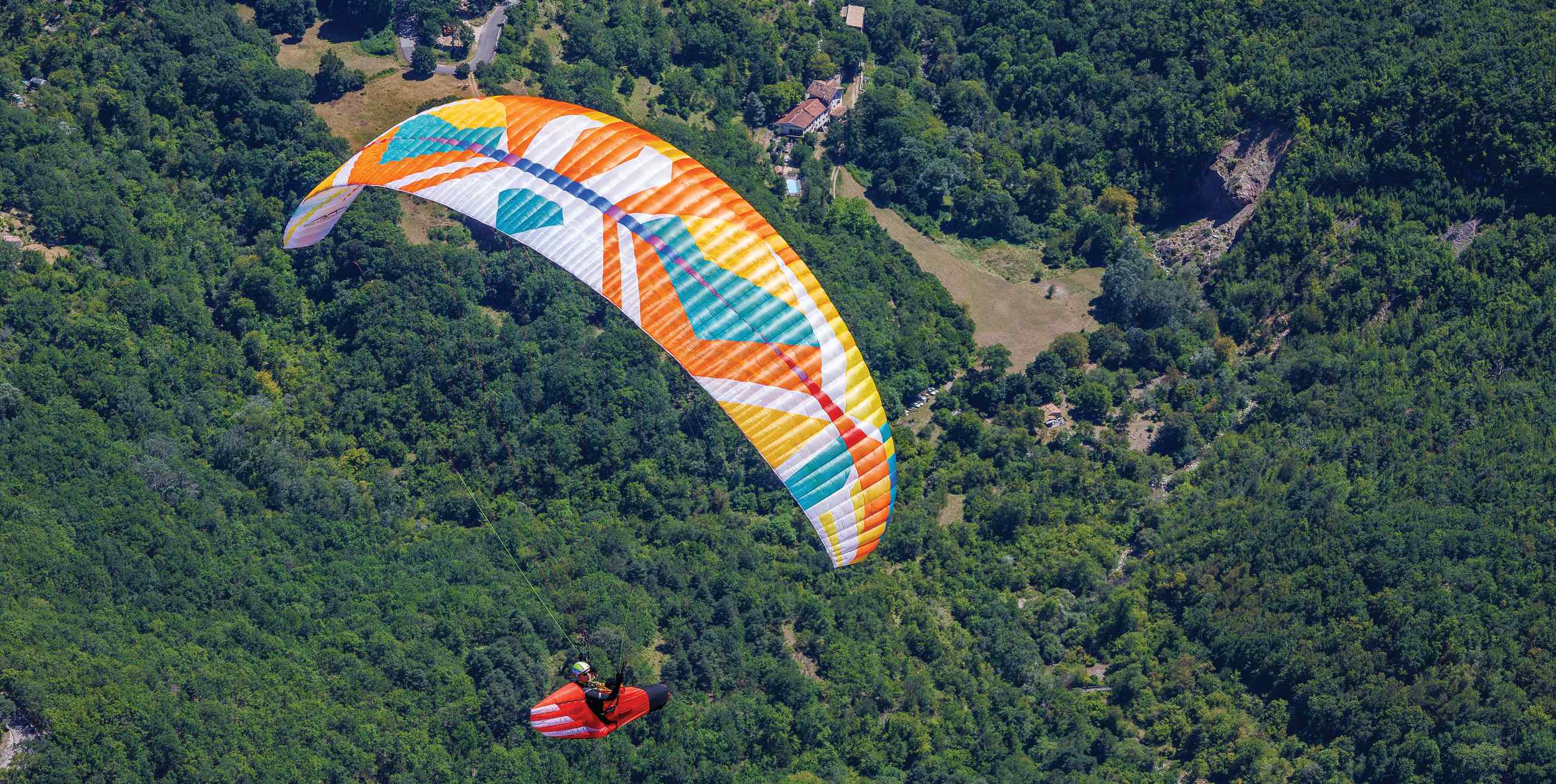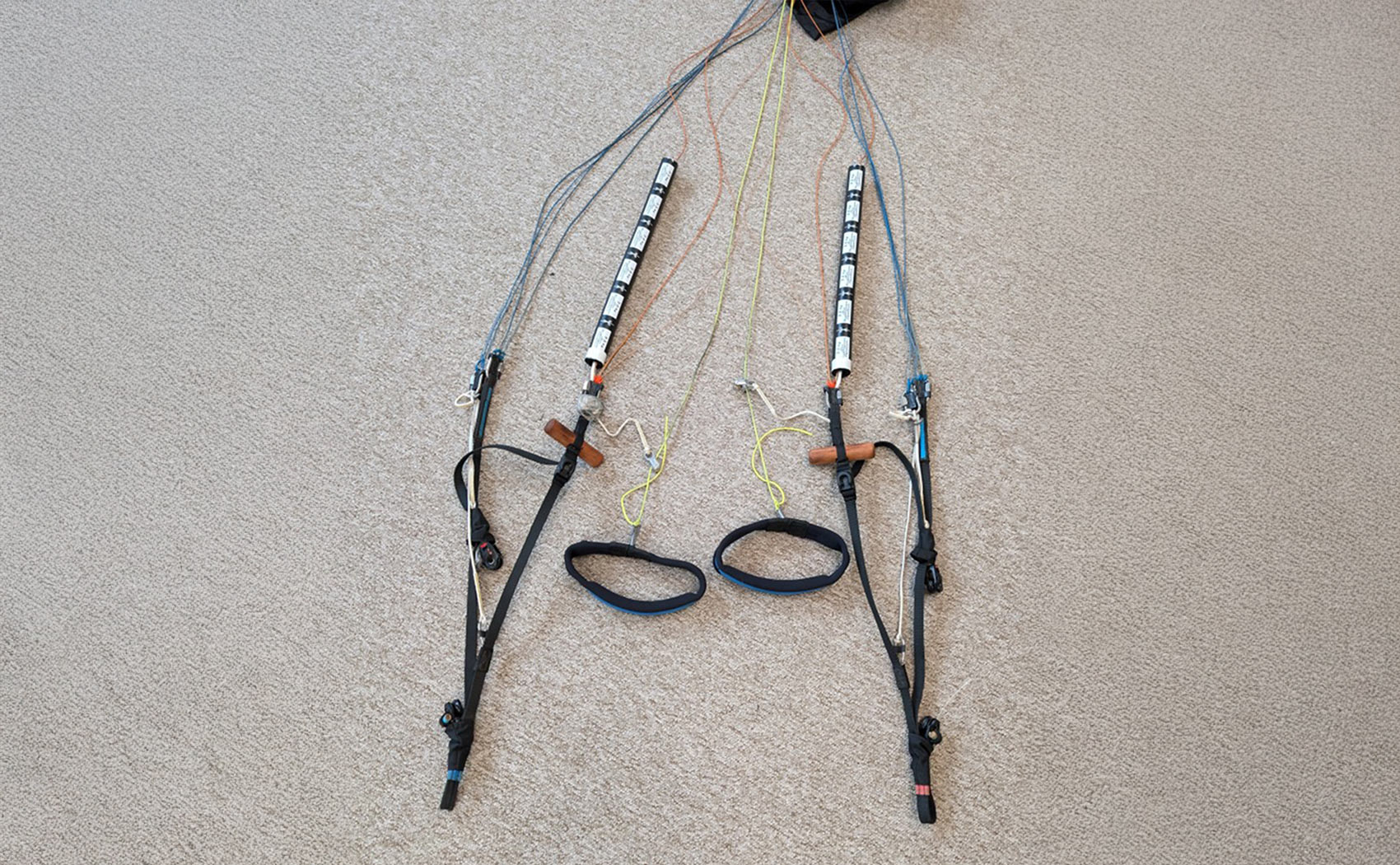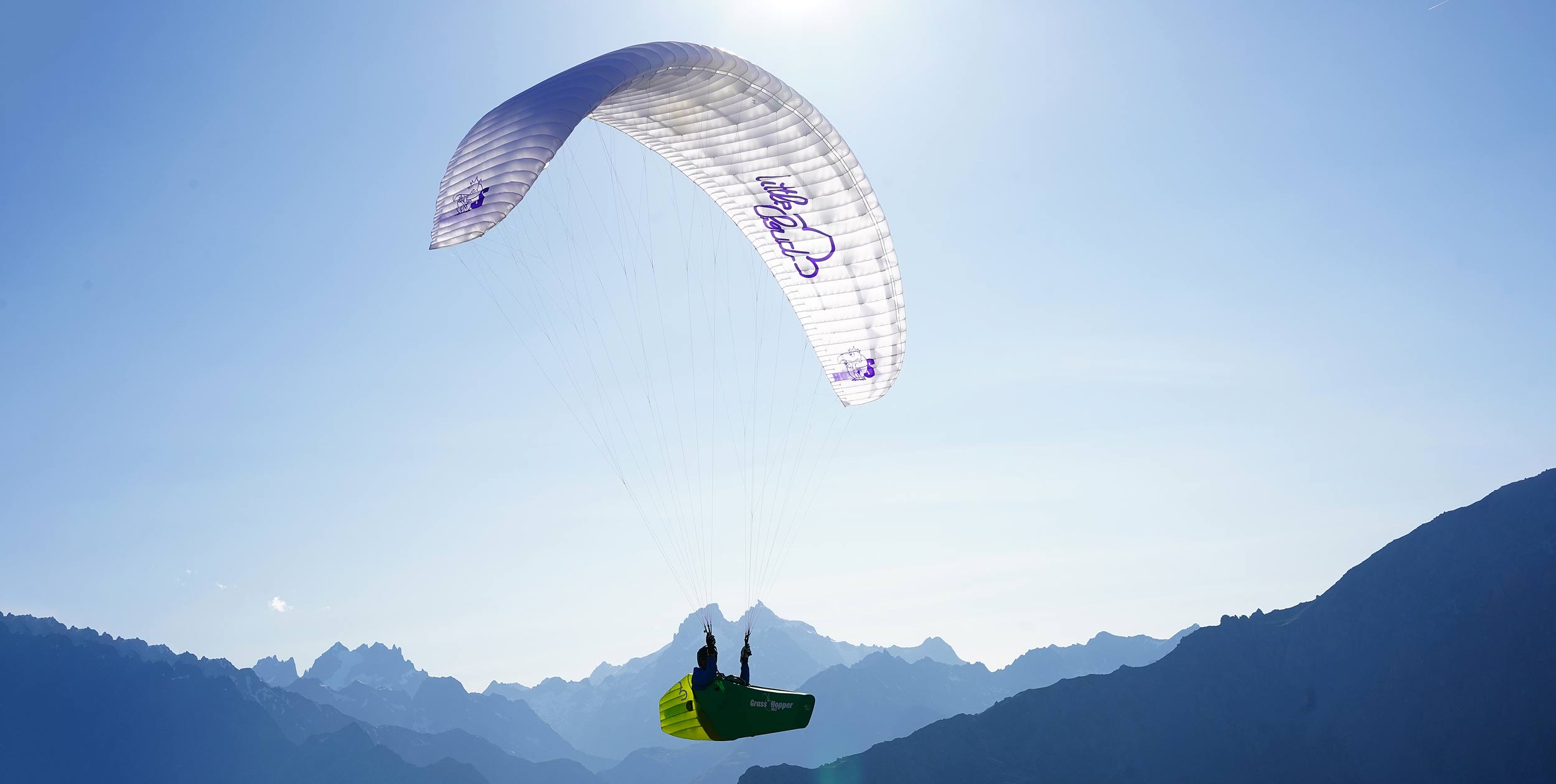
Heading off for adventure? Marcus King flies this lightweight sports-class wing that is perfect for travel or vol-biv.
I flew the Urubu from Little Cloud back in 2020 and reviewed it in XC216. I found it to be a wing that “gives you the feel and control to keep safe, along with behaviour that will look after you in real life conditions.” When designer and CEO Tom Bordeau asked me if I would like to try the Urubu King it wasn’t long before I was heading up our local hill with the new wing.
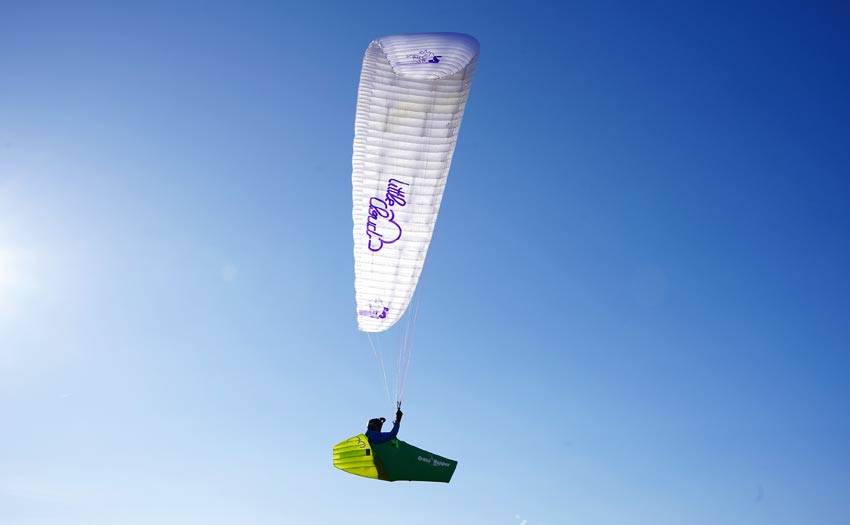
Design and build
Unrolling the wing it all looks familiar, very Little Cloud. The wing comes in a single colour – you can choose from white, orange, yellow or red – with a prominent Little Cloud logo on the top surface and wing logos on the tips. The Urubu King features the cartoon style vulture of the same name wearing a crown. The style hints that fun is key in what Little Cloud look for in a wing.
The Urubu King is aimed at C-class pilots but, as with all the Little Cloud wings, is only load tested. Tom says he prefers real-life testing, flying in the strong conditions of the southern French Alps to create a wing he can be happy to sell to its intended market.
The wing is made from Dominico D10 all over except for the ribs, which are made from hard Porcher 27. This makes for a lightweight wing: the large I flew goes to 110kg and weighs just 3.6kg. There are three sizes covering weights from 55-110kg all up.

The glider has the same cell count as the original Urubu – 57 – but the flat aspect has increased from 6.14 to 6.45. The changes you can’t easily see are changes to the profile and arc. The change in profile has allowed even smaller cell openings than the Urubu’s already small ones.
Unusually for Little Cloud, the Urubu King has mini-ribs on the trailing edge. Tom said they bring a “significant gain in efficiency, without any real downside.” Soft nylon rods run the length of the load-bearing ribs to better support the weight and distribute it. Even with these rods the wing still packs down very compactly.
A true three-liner, the lines themselves are bright orange and feel a bit weird to touch: they are the new UV- and water-resistant lines so should stand up well to wear and tear. The risers are relatively simple and made with black webbing with limited colour coding. There are C handles but no connection between the Cs and Bs.
The speed system uses good quality pulleys, but it should be noted they are positioned slightly higher than normal and Little Cloud recommend you make sure your bar is properly adjusted before flying.
Everything is finished to the high standard you would expect from an established manufacturer.
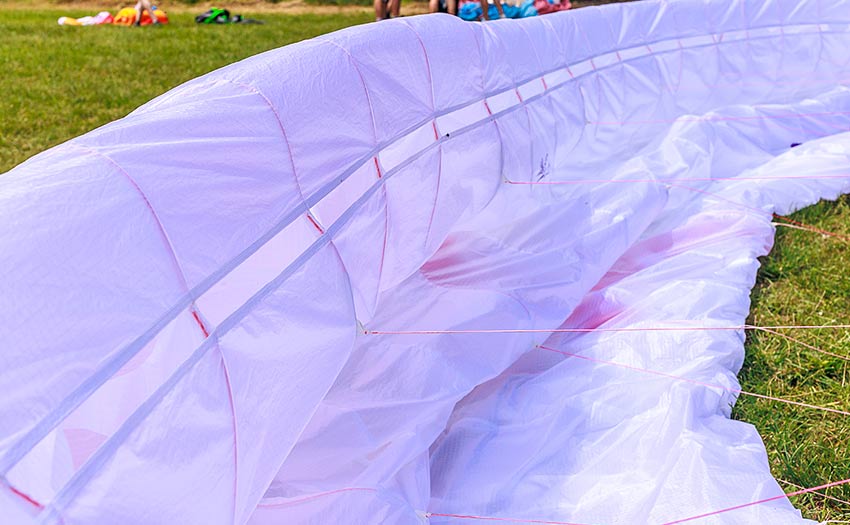
On launch
The wing is relatively easy to sort on launch. It can be hard to differentiate the lines, although at least the bright orange is easily seen in the grass.
The wing fills with air easily whether you are forward or reverse launching. Adding some pressure to the risers sees the wing climb smoothly and steadily.
Once above you its inherent pitch stability means it needs very little control. There is no snaking movement as you migh expect with a wing with this aspect ratio, it feels very similar to the original Urubu.

In the air
Once in the air the pitch stability associated with Little Cloud wings is evident. It needs very little management. You won’t find it drops back either as you enter lift, the wing just cuts in and up. I had no big surges when flying the wing either at trim or on bar – especially reassuring when pushing along a ridge going in and out of lift.
I felt the brake pressure is a little lighter than the Urubu but still firm enough to give you a good feel. The brakes are nicely responsive to input, and you can put the wing exactly where you want.
If you go deep in the brakes it will steepen the turn; come off them and it flattens out immediately. There is good feedback without it being overwhelming and despite the higher aspect ratio it is still a fun and relaxing wing to fly. Of course, it is aimed at C-level pilots and you should have the skills to fly a wing of this class. Nevertheless, it feels accessible and will put a smile on your face with its direct handling.
I was flying the large about 8kg below the top of the weight range and the wing remained solid and felt fast on trim. At this weight I was able to make good use of small light thermals to climb out at the end of the day but was still confident flying it in strong midday conditions on the big south faces we fly. The wing certainly climbs as well as any other C wing I was flying with.
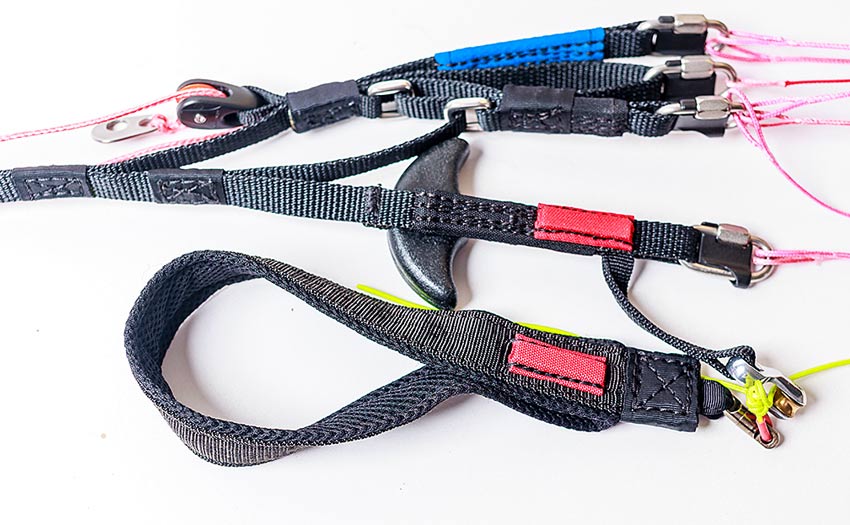
On glide I found the speed bar gives around another 13km/h over the already fast-feeling trim. It certainly is no slouch and I had no problems keeping up with others flying the latest C-wings. The bar is usable across the range, and I never had any pitching that required big corrections using the Cs.
The C handles don’t have the engaged feel you get on the latest two-liner EN-Cs but they do allow you to feel the pressure in the wing and the air. I used them for this and steering rather than catching the wing generally.
Unlike some of the newer gliders around, big ears are easy to pull and don’t flap around madly. Combined with the speed bar they give a good descent rate and forward speed to get you away from the lift. Once released they roll out slowly but solid pumps will encourage them along the way.
Getting more dynamic, the Urubu King shows its fun Little Cloud style. It’s easy to get the wing up on a wingtip and to carve smooth wingovers. I’m sure the reactive brakes will also make it fun to throw around on a laminar soaring site. Spirals are the same – hold in the brake and drop in then hold, release and bleed off the energy without fuss, it’s a wing that certainly has a playful side that will have you beaming.
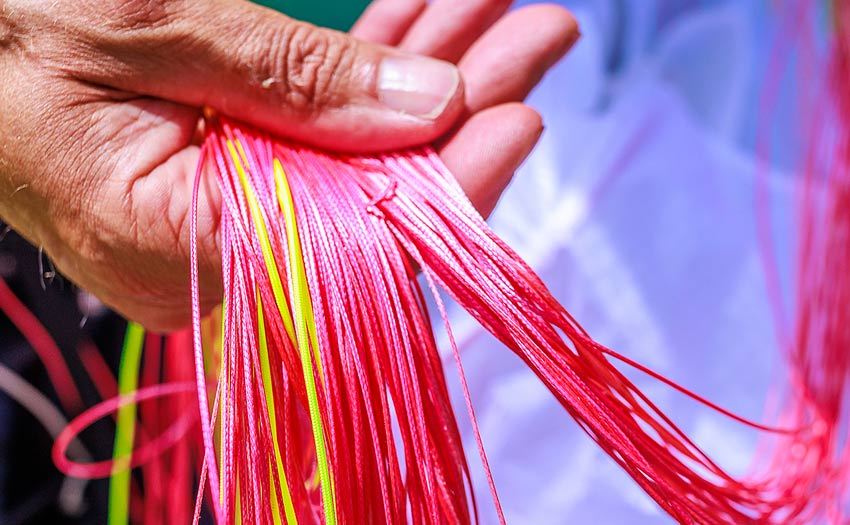
The verdict
As with the original Urubu, the lack of certification will undoubtedly put some pilots off but if you can see past this you will find a glider that has great feel, good real-life performance and most importantly will put a smile on your face. The demands the wing puts on the pilot have increased but only a little, and any EN-C pilot will be totally capable of flying this wing.
With its low weight and compact packing size it would make a perfect vol-biv or travel wing. As I said with the original Urubu, “if you want something a bit exotic then I recommend you give it a try.”
Manufacturer’s SPECIFICATIONS
Little Cloud say: “The Urubu King is the version on steroids of the Urubu! It offers better glide as well as better performance in thermals and on bar in particular”
Use: Cross-country and vol-biv
Pilot level: Sports class
Sizes: S, M, L
Certified take-off weight (kg): 60-80, 75-95, 90-110
Flat area (m2): 21, 23, 25.2
Glider weight (kg): 3.3, 3.5, 3.7
Cells: 57
Flat aspect ratio: 6.45
Certification: EN Load Test
Q&A with TOM BORDEAU, LITTLE CLOUD DESIGNER
Who is the Urubu King aimed at?
XC pilots, EN-C level with a focus on enjoyment. After the Urubu was released I kept making prototypes to keep learning new things. I played with the aspect ratio to see where the limit was while keeping the wing compact, relatively accessible, and fun. Eventually, after a bunch of new ideas one proto stood out. It offered more performance than the original Urubu but was still very accessible. I flew a few iterations of this for over a year (two seasons in France and one in Brazil). I was so happy with this glider that I decided even though we already had the Urubu to release this version with more aspect ratio.
What were the main design challenges?
To get better performance/efficiency without altering how demanding the glider was and keeping it fun and very Little Cloud – pitch stable, sharp handling, playful.
Playing around with aspect ratio and a new profile was the way. I developed a lot of new aerofoils to increase efficiency. It’s a very interesting process, but costly as you need to build a full glider to get the answer. I played a bit too with the wing loading/aerofoil thickness to improve the low-end efficiency.
The use of long nylon rods on the supported ribs only (except tips) helped to bring a good cohesion to the canopy without making it difficult to pack. At the very end of the process I also tried implementing mini-ribs on the trailing edge. I’ve always been sceptical about mini-ribs, but as it was extremely optimised already, it was one more step to improve. I’ve tried to optimise everything I can on this glider.
Did you look at 2.5 or even two-line layouts when developing the wing?
Not really. I have done a few 2.5-line protos in the past, but without real enthusiasm. I already always have extremely low line consumption on my designs so I wouldn’t gain that much there. I understand the benefit of ‘better control’ of the AOA when speeding up the glider, but it doesn’t seem to be a real issue with three lines on my designs. Plus it requires a little bit more structure inside to keep the tips clean and neat and I’d have to rethink the aerofoil thickness along the tips too.
I had already worked for a long time on two-liners too. So, I decided to make a two-line version of the proto that was giving me so much satisfaction. Last season in France was one of the driest I’ve seen, with very rough conditions. The two-line version was giving a lot of satisfaction, but every time I went back to the three-line I was thinking, holy moly, this is so much more fun and relaxed than the two-line, especially for landings or top-landing. Performance was a bit higher of course but in the end the increase in pilot demand was higher than this gain.
What are you happiest about with the wing?
It’s a glider I can use for everything, from soaring on the beach in Canoa Quebrada to flying XC in Quixadá. It handles strong conditions very well. It still packs small and offers very good performance. I know I can trust it 100% of the time.
What’s on the horizon for Little Cloud?
I’m busy testing a new glider for release in the autumn, something like a travel wing, light, compact, small size. It’s called The SuperFly. I spend a bit of time every year in Bahia, Brazil and there we have a beautiful hike-and-fly spot, but the take-off is very small. So last year I designed a wing for this place. It turns out that we could do local XC and more with our protos. As always safety is one big concern: we fly above the jungle and to be honest a reserve is not an option! We’ll have three sizes: 17/19.5/22. Aspect ratio is 5.5 and it is still very Little Cloud (super-safe, super-fun).
Published in issue 243
Marcus King flew the Urubu King L (90-110kg) in the southern French Alps at around 102-103kg, paired with a Woody Valley GTO Light 2 with foam protection.


